
Site is in development off and on. Link buttons with white backgrounds haven't been completed. Colored buttons should work. Please let me know if you encounter a broken link. Comments and suggestions welcome
My involvement with knapping and primitive technologies goes all the way back to before I could walk. My parents had home movies of me sitting on the ground hitting rocks together as a toddler. I'm thoroughly convinced that my knapping is a genetic thing. This seems to be verified by a short video of may grandson 'knapping' at the age of 6 months! True, he was using ping pong balls, but unlike other infants I have observed, clearly hit them together with knapping gestures. Click this link to see the video.
I, like many other 'spontaneous knappers', are no doubt throwbacks from the Stone Age. Throughout my childhood in Michigan I was fascinated with Indian lore and relics but had little exposure to the real things. I once visited an old man during an Indian Guides outing who showed us his extensive collection of relics. From that time I tried to make arrowheads by grinding pieces of sandstone (no flint or chert nearby). In the late 1960s the whole family took a camping trip through the West where I saw lots of arrowheads and other artifacts in museums, shops, etc. In Cody, Wyoming I bought my first arrowhead in a souvenir shop (I have since noted that it is an old base with a nail-reworked tip.) I also finally connected obsidian with arrowheads. Later in the trip I bought a chunk of obsidian from a rock shop and a friend and I proceeded to pulverize it on a picnic table in Colorado National Monument. I didn't even understand the concept of flake, but it was the beginning of a long obsession with knapping. While I was at University, I gained field experience in archaeology and continued to bust rocks on my own. At the time, I had seen nothing about how it was done other than a very simple (and inaccurate) diagram in a beginning archaeology book. In 1969 I was fortunate to have the chance to watch and later work with three prominent knappers- Don Crabtree, François Bordes, and Jacques Tixier. All three came to the University under the sponsorship of Professor Art Jelinek. This was a time of great advancement in my own skills. It wasn't so much the techniques that I learned as it was the exposure to new flaking tools.
Over the years I have done hundreds of demonstrations in academic as well as public venues in 5 continents. I have participated in many experimental projects and taught knapping as part of my role as Director of an MA Experimental Archaeology Programme at the University of Exeter, UK. In the past several years I have offered knapping workshops in the UK, India (Bengaluru, Kokata and Changigarh), Brazil (São Paulo and Rio de Janiero), Uruguay (Montevideo), Argentina (Necochia and Cordoba) and most recently China (Nihewan Region). Additional workshops are being planned for South America and Uskal Herria (Basque Country).

Prof. François Bordes and Don Crabtree 1969
My obsession continued unabated but it was hard coming by good flaking stone. Like many others, I scrounged old bleach bottle bases from local dumps. I even went through a Bacardi phase. There were also some other students who became inspired (Bruce Huckell and Mike Collins among others). We banded together and bought bulk obsidian from a rock shop in El Paso, Texas. We mostly worked on our own but would occasionally get together for our own small "knap-ins" (it was the time of antiwar sit-ins and love-ins but we were too busy knapping to be involved in those extra-curricular activities). François Bordes spent a whole semester at U of A in spring 1970 and he and I spent most every spare moment knapping in a little room on the ground floor of the Anthropology building. I still don't know why it was, but he and I hit it off extremely well (pun intended). Our temperaments were absolute opposites. I was born with patience (in knapping) and a high threshold of frustration. When something went wrong and I screwed up I would, for the most part, shrug my shoulders and toss the offending pieces over my shoulder and quietly begin over. Prof. Bordes on the other hand was a 'power knapper' and what he lacked in finesse he made up for in sheer force. You can imagine how this worked with the brittle obsidian we had to work with. There was an almost unbroken string of obscenities wafting out of that little room and bouncing around the halls of the Anthro. building. One of Prof. Bordes' favorite sayings was "Flint, she is a woman, obsidian, she is a whore". I learned how to swear in 14 languages! A skill I seldom employ, but on rare occasions I can still be heard mumbling unintelligibly some of those colorful phrases. Prof. Bordes invited me to participate in his Middle Paleolithic excavations in SW France that summer and I spent several glorious months digging in 50,000 year old sites, knapping incredible flint (mostly Bergerac), and exploring the countryside and backwoods of the Dordogne. During this time, I once again met up with Jacques Tixier who invited me to come to Lebanon and dig with him near Beirut. This I couldn't pass up and I went there in September 1970. Although I was there only a short three weeks, I managed to have some great adventures and discovered the amazing light pink flint of the Baka Valley. On the way home, I visited a French Canadian archaeologist, who I worked with in France, in Cambridge, England. There I was introduced to the rich blue-black flints of the European chalks. I managed to visit the famous Brandon gunflint knapping areas and saw Grimes Graves, the Neolithic flint mining complex. All the while I continued knapping at every possible opportunity. A professor at Cambridge, Dr. Charles McBurney, became interested in my skills and invited me to apply to graduate school. At that time I had still had had enough academics for awhile, so I deferred an answer and returned to the American Southwest and made my living through 'have-trowel-will-travel" archaeology. I also spent some of the summer of 1971 travelling with my dog Jake through Wyoming and two weeks at Don Crabtree's field school outside Twin Falls, Idaho. This exposed me to the amazing variety of flaking stones in that part of the world from the fine-grained silicified sandstones and multicolored jaspers of Spanish Diggings to the brown brittle ignumbrites of SW Idaho. I have since had many additional knapping adventures and these have led me to some amazing opportunities in Paleoindian archaeology in North America, involvement with the pre-Clovis controversy, and back to the Old World where I received my PhD from Cambridge ( I busted rocks for my dissertation work), and eventually into an involvement in Russian and back to French Paleolithic archaeology. Throughout all of these experiences, I have maintained my main knapping motivations of creating beautiful objects as well as the challenge of figuring out ancient technologies. For me knapping is art and archaeology. I'm not sure what I'd be doing if it hadn't been for the chance encounters with some dedicated knapper/archaeologists or those nonknapper/archaeologists who recognized the value of knapping and encouraged my involvement in both. A few of these included the three distinguished knappers I mentioned earlier along with Drs. C. Garth Sampsom, Charles McBurney, Dennis Stanford, Marie Wormington, and not the least George Frison. My knapping skills were also carefully honed during long and frequent visits with J.B Sollberger in his backyard in Dallas. I have been lucky in my peers with learning from such noted knappers as Bruce Huckell, D.C. Waldorf, Eugene Gryba, Errett Callahan, Greg Nunn, Bob Patton, Jeff Flenniken, Witold Migal, Bo Madsen, Mikkel Sorenson, Jacques Pelegrin, Thierry Aubry, Bertrand Walter and not the least my Russian friend and colleague Yevgenij Giria. I must also credit my family who tolerated my obsession (and the dangerous messes I left laying around), encouraged and even helped finance some of my travels and education, and ultimately my wife Cindy and children Travis, Kyle, and Shannon who have accepted my aberration as an integral part of my character, and love me none-the-less. I knap mostly for fun and to learn about processes that may have been used in the past. I also occasionally sell individual pieces and sets. These are all documented and marked so that they can't be passed off as old. Over the years I have also traded some of my pieces with Pueblo people who have supplied me with examples of their art; mainly pottery. There is a continual need for points, however, I don't ask why. I have supplied teaching and display sets to many universities and museums, including the Smithsonian, the New York Natural History Museum, the Denver and Albuquerque Museums of Natural History, and several other museums. I have also specialized in art sets of Paleoindian and High Plains projectile points and knives. I use stone knives when I hunt large game and have found them to be superior for field dressing and skinning. My hunting partners have discovered the same thing and I have made them knives for their own use.
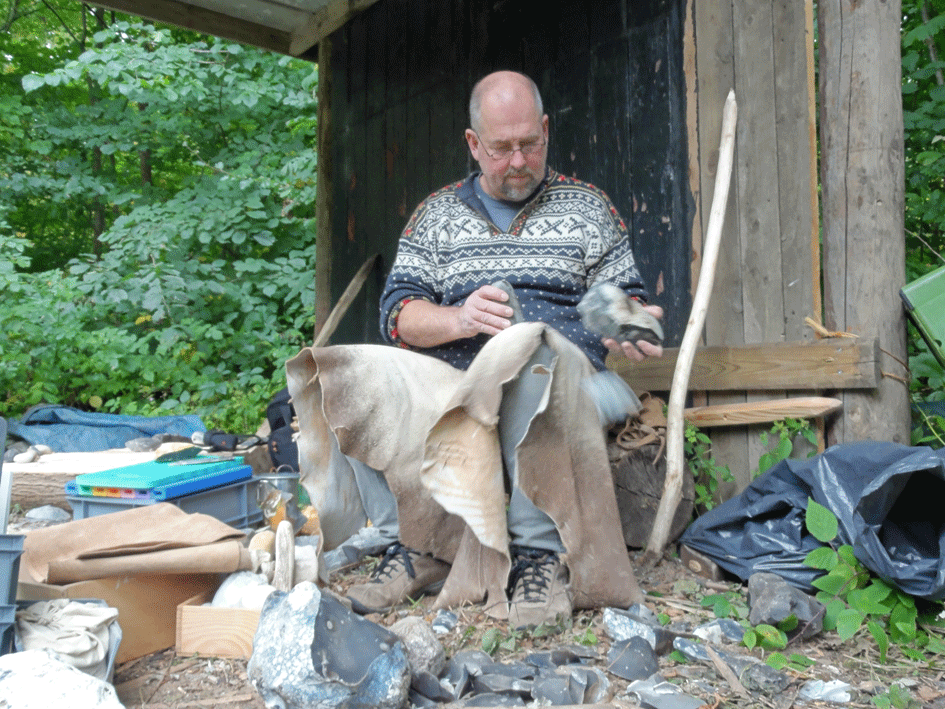
Bo Madsen Moesgaard Denmark 2013

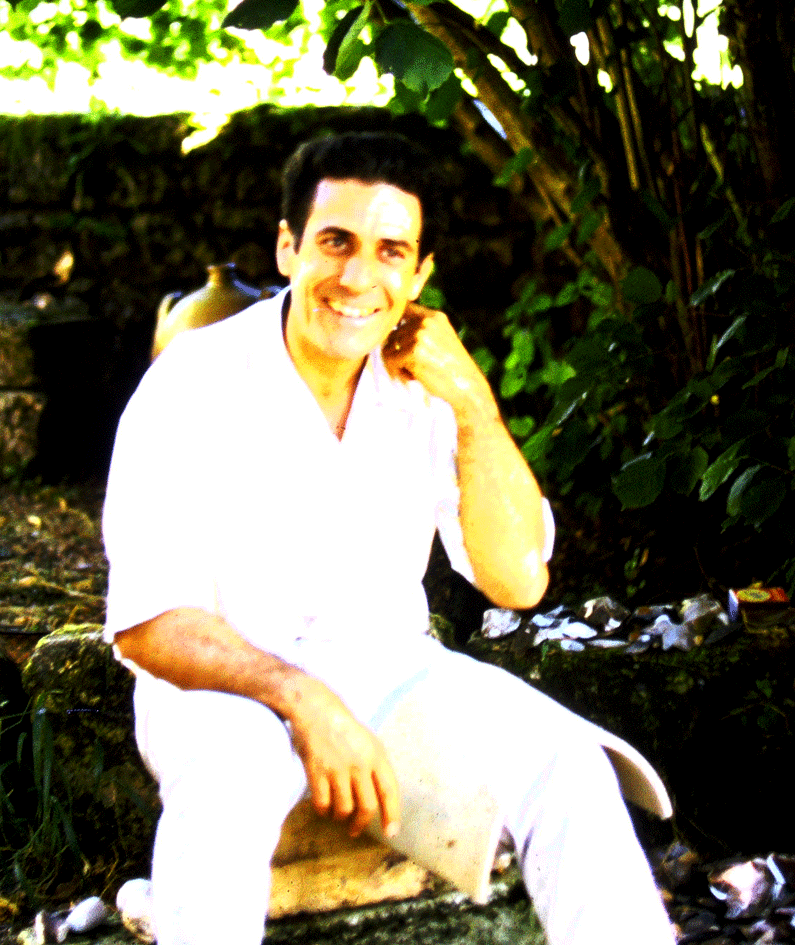
Prof. François Bordes 1970 Carsac, France
Jacques Tixier 1970 Carsac, France
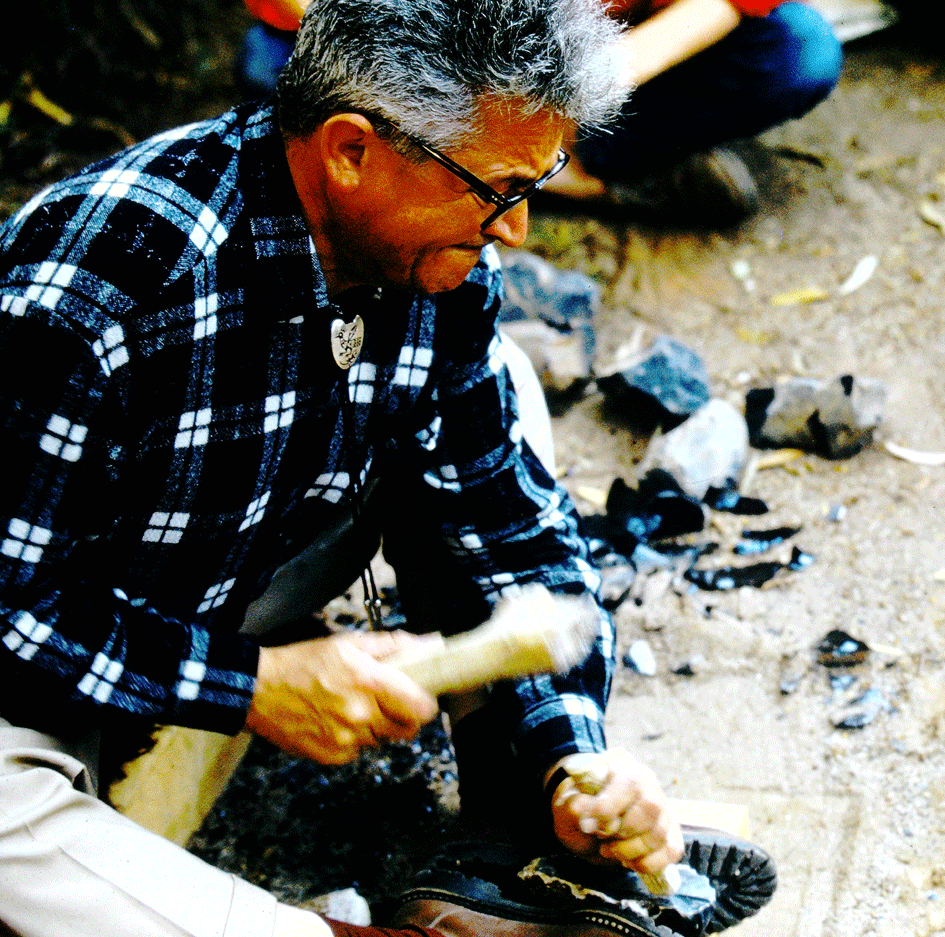
Prof. François Bordes 1970 striking blades Carsac, France


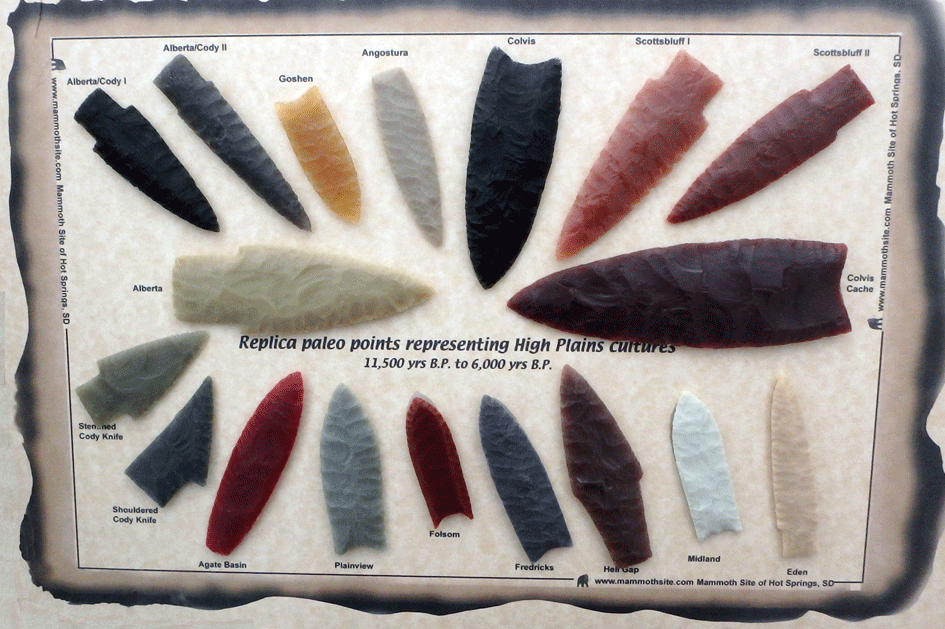
Replica casts sold as a set. I made the originals for the Mammoth Museum.
They made the casts and booklet for sale in their gift shop.
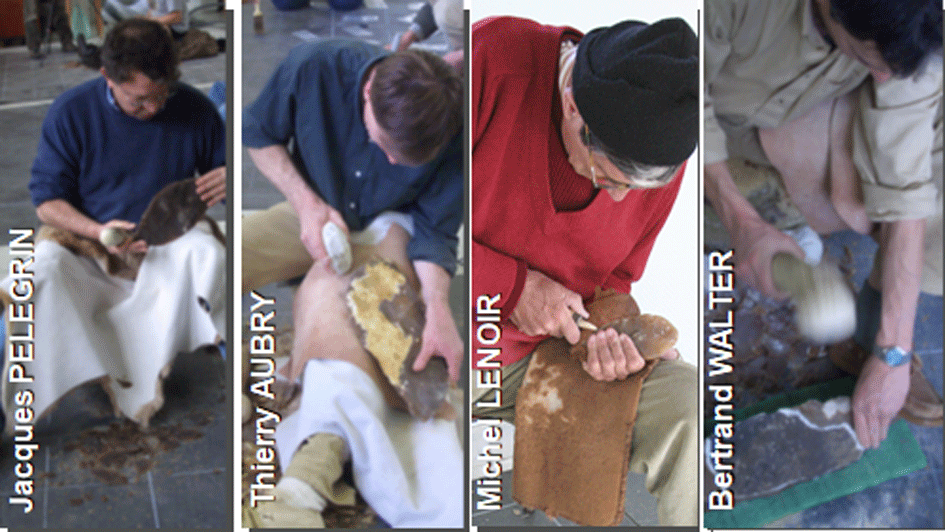
Booklet cover and example page
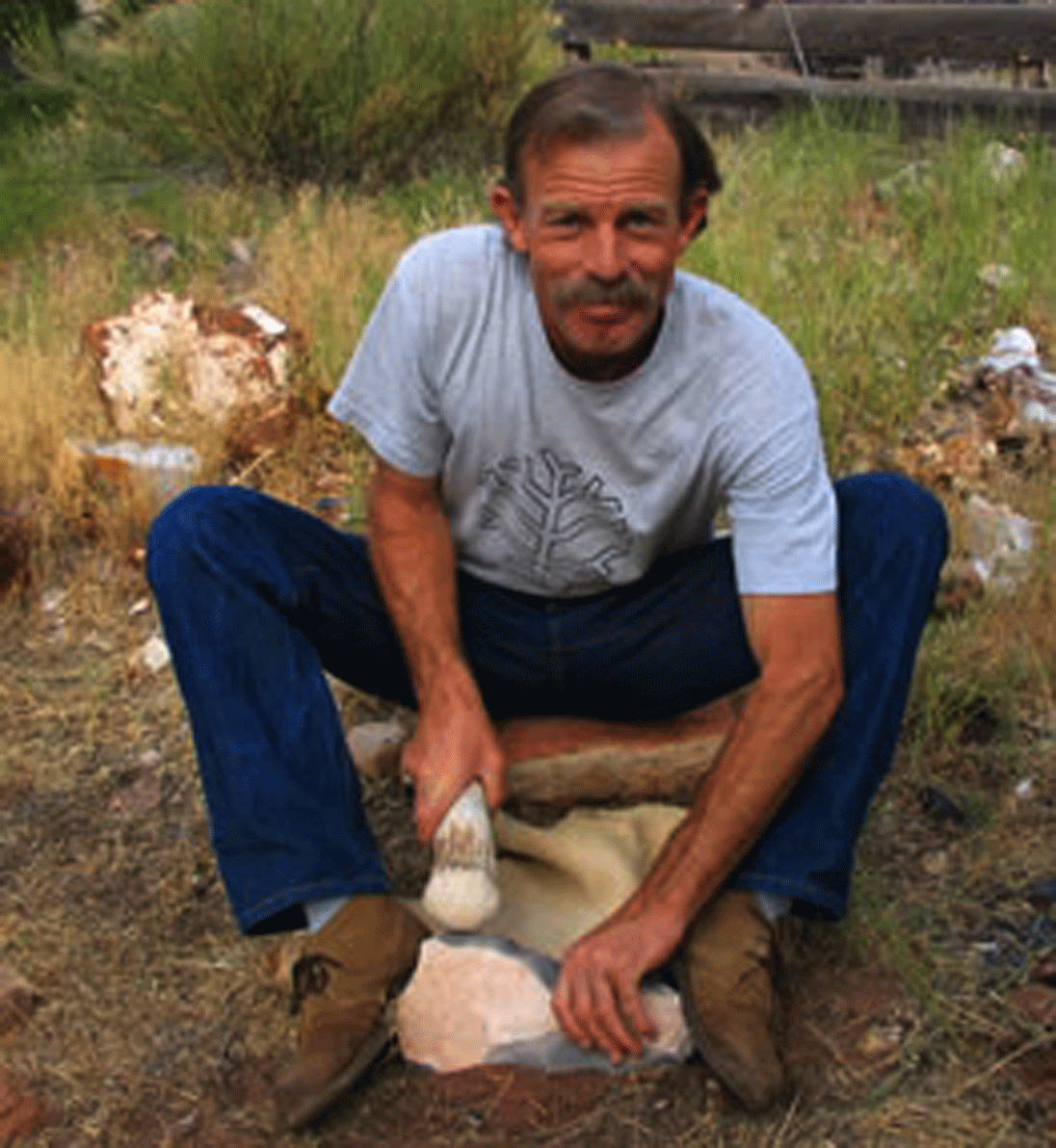
More French knappers with whom I have worked
